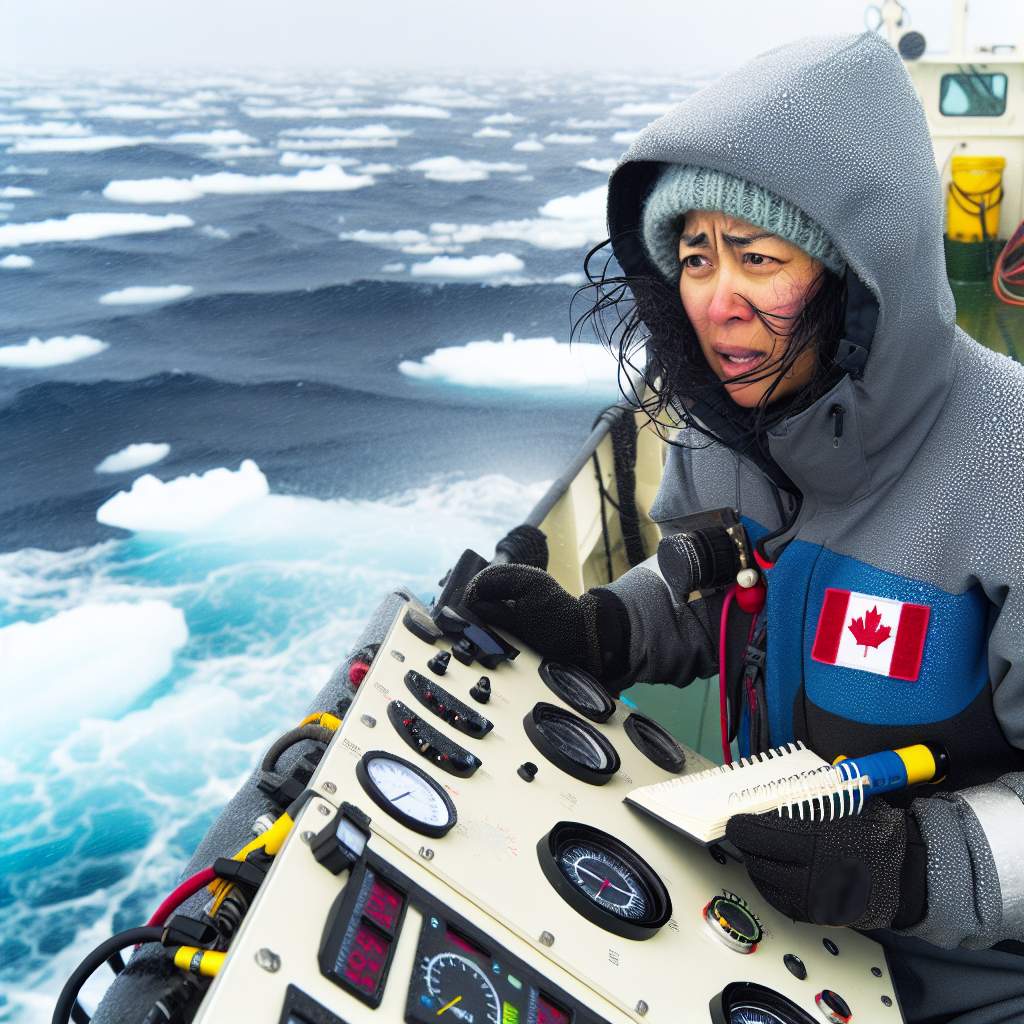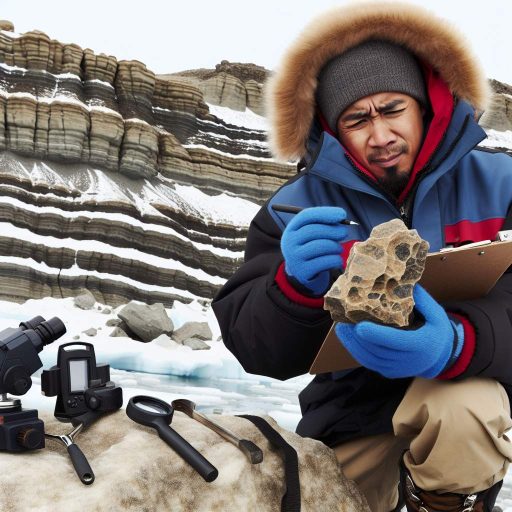Introduction to Oceanography and Its Significance in Global Science
Oceanography studies the ocean’s complex systems and vital role in our planet.
This field connects biological, chemical, and physical sciences.
It helps us understand Earth’s climate and weather patterns.
Moreover, oceanography provides insight into marine ecosystems and biodiversity.
Human activities impact oceans significantly.
Understanding these effects is crucial for conservation efforts.
Oceanographic research informs policies to protect marine environments.
The Interdisciplinary Nature of Oceanography
Oceanography integrates knowledge from various scientific disciplines.
For instance, it uses physics to understand ocean currents and waves.
Additionally, chemistry helps analyze seawater composition.
Biology focuses on marine life and ecosystems.
This interdisciplinary approach enhances our understanding of ocean systems.
Impacts of Climate Change on the Oceans
Climate change significantly impacts ocean temperatures and sea levels.
Higher temperatures affect coral reefs, leading to bleaching.
Rising sea levels threaten coastal communities and ecosystems.
Oceanography monitors these changes, providing vital data for mitigation strategies.
The Role of Technology in Oceanographic Research
Advancements in technology revolutionize oceanographic studies.
Remote sensing and underwater drones collect data efficiently.
These tools allow scientists to explore previously inaccessible areas.
Technological innovations improve our understanding of ocean processes.
Global Collaboration for Ocean Health
International collaborations enhance oceanographic research efforts.
Countries share data and resources to tackle global challenges.
This collaboration is essential for addressing pollution and overfishing.
By working together, nations can protect ocean health for future generations.
The Role of Ocean Currents in Climate Regulation and Global Weather Patterns
Understanding Ocean Currents
Ocean currents are large-scale flows of seawater that circulate through the world’s oceans.
Unlock Your Career Potential
Visualize a clear path to success with our tailored Career Consulting service. Personalized insights in just 1-3 days.
Get StartedThese currents play a crucial role in regulating global climate and weather patterns.
They distribute heat from the equator to the poles, impacting temperature and weather events.
For instance, the Gulf Stream carries warm water northward, warming North America’s east coast.
Consequently, regions that are influenced by ocean currents typically experience milder climates.
The Importance of Heat Distribution
Heat distribution by ocean currents affects atmospheric conditions significantly.
As warm water heats the air above, it leads to the formation of weather systems.
This process drives not only local weather but also global climate patterns.
For example, the El Niño and La Niña phenomena demonstrate the impact of ocean currents on climate.
These events cause dramatic changes in weather across multiple continents.
Interaction with Weather Systems
Ocean currents interact with atmospheric systems to influence precipitation patterns.
Areas near warm currents often receive more rainfall, while cooler regions may remain arid.
Furthermore, ocean currents can strengthen or weaken storms as they move across water bodies.
For example, hurricanes gain energy from warm ocean waters, leading to more severe storms.
This relationship showcases the interconnectedness of oceanography and meteorology.
Implications for Climate Change
Climate change significantly affects ocean currents and, consequently, global weather patterns.
Warming waters can alter current strength and direction, impacting weather systems worldwide.
Moreover, melting polar ice affects salinity levels, further disrupting ocean circulation.
These changes can lead to more extreme weather events, such as droughts and floods.
Thus, understanding ocean currents is essential for predicting future climate scenarios.
Understanding Marine Biodiversity and Ecosystems
Role of Oceanography in Biodiversity
Oceanography plays a crucial role in understanding marine biodiversity.
It studies the distribution of different marine species.
This discipline explores how these species interact within their ecosystems.
Furthermore, oceanographers identify key biodiversity hotspots.
These areas are vital for conservation efforts.
Researchers like Dr. Emily Carter focus on species diversity dynamics.
They utilize various tools, including satellite imagery and sonar technology.
Impact of Ocean Conditions
Oceanographic research reveals how environmental conditions impact biodiversity.
Temperature changes affect species distribution significantly.
Salinity variations can alter habitat suitability for marine life.
Additionally, ocean currents influence nutrient cycling in ecosystems.
Such shifts affect food webs and overall ecosystem health.
Data from institutions like the Oceanic Research Institute supports these findings.
Ecosystem Services and Human Benefits
Marine ecosystems provide essential services to humans.
These include fisheries, coastal protection, and tourism opportunities.
Oceanography helps quantify these services effectively.
For instance, fish populations directly correlate with ocean health.
Healthy ecosystems sustain local economies and livelihoods.
Thus, safeguarding marine biodiversity becomes crucial for sustainability.
Challenges in Marine Conservation
Human activities pose significant threats to marine biodiversity.
Pollution and overfishing have detrimental effects on ecosystems.
Climate change further exacerbates these issues.
Oceanographers work to provide data-driven solutions for conservation.
They advocate for policies aimed at protecting vulnerable species and habitats.
Collaborative efforts with governments and NGOs enhance these initiatives.
Gain More Insights: Steps to Land a Job as a Geneticist in Canada
The Impact of Oceanographic Research on Coastal Management and Conservation Efforts
Understanding Coastal Ecosystems
Coastal ecosystems provide vital services to humanity.
They support diverse wildlife and stabilize shorelines.
Moreover, they play a critical role in carbon sequestration.
Oceanographic research helps to map these ecosystems accurately.
Research also identifies the effects of climate change on these areas.
Informed Decision-Making
Effective coastal management relies on sound scientific data.
Oceanographic studies supply essential information for policymakers.
For instance, they inform strategic planning for coastal development.
Data from these studies help to mitigate risks from natural disasters.
Additionally, they support sustainable fishing practices and marine reserves.
Community Engagement and Awareness
Oceanography research fosters community awareness about coastal issues.
Organizations conduct educational programs based on research findings.
Such initiatives empower local residents to protect their environments.
Moreover, they promote collaboration among stakeholders, including NGOs and government agencies.
Engaged communities are more likely to adopt sustainable practices.
Enhancing Conservation Strategies
Research offers insights into effective conservation strategies.
It helps to identify key habitats that require protection.
Furthermore, oceanographic data inform about invasive species management.
This information is crucial for maintaining ecological balance in coastal areas.
Conservation efforts become more targeted and effective through reliable data.
Long-term Monitoring and Adaptation
Long-term oceanographic research provides baseline data for monitoring changes.
Such data is essential in evaluating the effectiveness of management strategies.
Adaptive management approaches ensure that responses evolve with changing conditions.
Therefore, continuous research keeps coastal management proactive and effective.
This dynamic approach enriches resilience against environmental challenges.
Find Out More: Essential Fieldwork Tips for Wildlife Biologists
Linking Oceanography with Atmospheric Science for Climate Change Studies
The Role of Ocean Currents
Ocean currents significantly influence global climate patterns.
These currents transport warm and cold water across the planet.
Understanding their behavior helps predict weather changes.
Additionally, ocean currents impact marine ecosystems.
Interactions with the Atmosphere
The ocean and atmosphere continuously exchange heat and moisture.
This interaction drives weather systems and climate variability.
For instance, El Niño events showcase these dynamics clearly.
Such phenomena can lead to extreme weather across regions.
Climate Models and Predictions
Integrating oceanographic data enhances climate models.
Researchers use ocean temperature and salinity measurements.
These models predict future climate scenarios more accurately.
Consequently, effective climate policies can be developed.
The Importance of Collaborative Research
Collaboration between oceanographers and atmospheric scientists is vital.
Sharing data and expertise fosters a holistic understanding.
This teamwork leads to innovative solutions to climate challenges.
Moreover, it emphasizes the interconnectedness of Earth’s systems.
Real-World Applications
Insights from oceanographic studies inform coastal management practices.
They also aid in disaster preparedness for extreme weather events.
Research findings support sustainability initiatives and policies.
Ultimately, they guide global efforts to combat climate change.
See Related Content: Educational Pathways to Become a Geologist

The Importance of Oceanographic Data in Predicting Natural Disasters
Understanding Oceanographic Data
Oceanographic data plays a pivotal role in disaster prediction.
This data includes information on ocean currents, temperatures, and wave heights.
Scientists collect this data using advanced technologies such as satellites and buoys.
Through this data, they can monitor changes in ocean behavior.
Predicting Tsunamis
Tsunamis can cause widespread devastation in coastal areas.
Oceanographic data aids in early tsunami detection and warning systems.
For instance, scientists utilize seismic data alongside ocean measurements.
This combination helps identify potential tsunami-triggering earthquakes.
Moreover, computer models simulate tsunami waves based on environmental conditions.
Forecasting Hurricanes
Hurricanes are another natural disaster significantly influenced by oceanography.
The sea surface temperature is a critical factor in hurricane formation.
Warm waters provide energy that fuels these storms.
Oceanographic data assists meteorologists in tracking hurricane paths.
This information enhances early warning systems, potentially saving lives.
Real-World Applications
Several organizations actively use oceanographic data in their operations.
The National Oceanic and Atmospheric Administration monitors ocean conditions.
In addition, researchers at the Scripps Institution of Oceanography analyze data trends.
These efforts improve our understanding of ocean dynamics and natural disasters.
Crucial Role of Oceanographic Data
Ultimately, oceanographic data is crucial for predicting natural disasters.
It allows for timely warnings that can save lives and reduce economic losses.
As technology advances, so will our ability to understand ocean impacts.
Continuous research and data collection are essential to enhance predictive models.
See Related Content: How Geneticists Impact Canadian Healthcare and Innovation
Technological Advancements in Oceanography and Their Influence on Global Research Methodologies
Innovative Tools and Techniques
The field of oceanography has experienced significant technological advancements.
New tools have transformed how scientists study ocean environments.
For example, autonomous underwater vehicles (AUVs) allow for detailed data collection.
Satellites provide comprehensive monitoring of ocean surface temperatures.
Such innovations enable researchers to gather data more efficiently than ever.
Impact on Research Collaboration
Technological improvements foster international research collaboration.
Researchers can now share data globally in real-time.
This collaboration enhances the quality and scope of oceanographic studies.
Additionally, it promotes standardized methodologies among various research teams.
Improved Data Analysis
Advanced computational tools significantly improve data analysis capabilities.
Using machine learning, scientists can identify patterns in vast data sets.
Moreover, enhanced modeling techniques simulate oceanic processes with greater accuracy.
This allows for better predictions about climate change impacts.
Public Engagement and Awareness
Technology also plays a role in public engagement with ocean science.
Interactive platforms help educate communities about ocean health.
Through online tools, people can participate in citizen science projects.
This engagement raises awareness about critical oceanic issues.
Future Directions
As technology evolves, oceanography will continue to advance.
Emerging technologies will likely lead to even more discoveries.
Researchers must stay adaptable to maximize these technological benefits.
Ultimately, these advancements will strengthen global scientific methods.
Future Trends in Oceanography
Innovative Technologies
Oceanography is rapidly evolving through innovative technologies.
These advancements enhance data collection methods significantly.
For instance, autonomous underwater vehicles are gaining popularity.
These vehicles collect data in previously unreachable areas.
Moreover, satellite technology provides global ocean observations.
This technology improves our understanding of ocean dynamics.
Interdisciplinary Approaches
Future oceanography emphasizes interdisciplinary collaboration.
This approach integrates climate science, biology, and engineering.
Working together enhances research outcomes and provides diverse perspectives.
As a result, teams can tackle bigger global challenges efficiently.
Cross-disciplinary projects will advance knowledge considerably.
Potential to Address Global Environmental Challenges
Climate Change Mitigation
Oceanography plays a crucial role in climate change mitigation.
Studying ocean currents helps model climate scenarios accurately.
Furthermore, understanding carbon sequestration offers valuable insights.
Knowledge about ocean absorption of carbon dioxide can guide policies.
Biodiversity Conservation
Ocean research supports biodiversity conservation efforts worldwide.
By mapping marine ecosystems, scientists identify critical habitats.
This information aids the establishment of marine protected areas.
Consequently, these efforts promote species recovery and resilience.
Pollution Management
Oceanography also addresses pollution management effectively.
Monitoring ocean health can mitigate the impacts of pollution.
For example, tracking plastic debris helps inform cleanup initiatives.
Moreover, studying pollutant dispersion enhances risk assessments.
This information is vital for formulating effective regulations.
Public Awareness and Education
Enhancing public awareness is critical for environmental efforts.
Oceanography can foster greater understanding of oceanic issues.
Educational programs engage communities in conservation actions.
Increased awareness leads to more responsible behaviors towards oceans.
Additional Resources
New ocean floats to boost global network essential for weather …
Assessing the global ocean science community: understanding …




